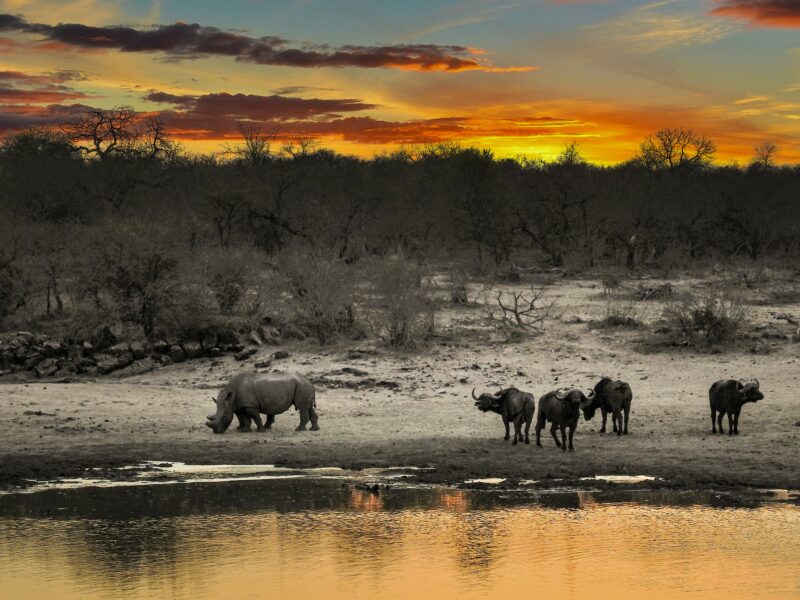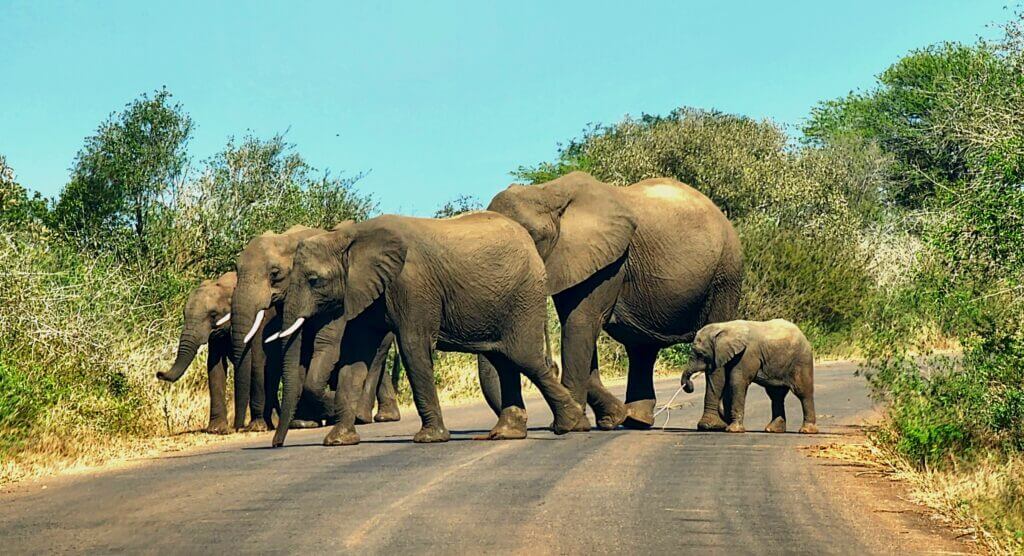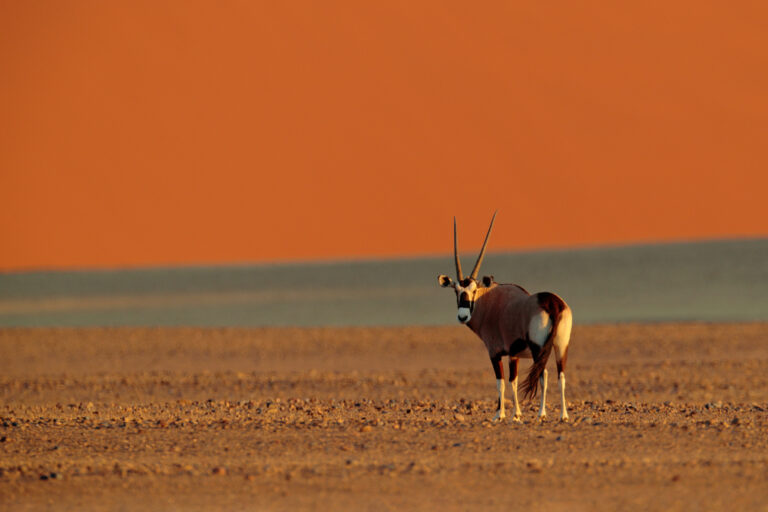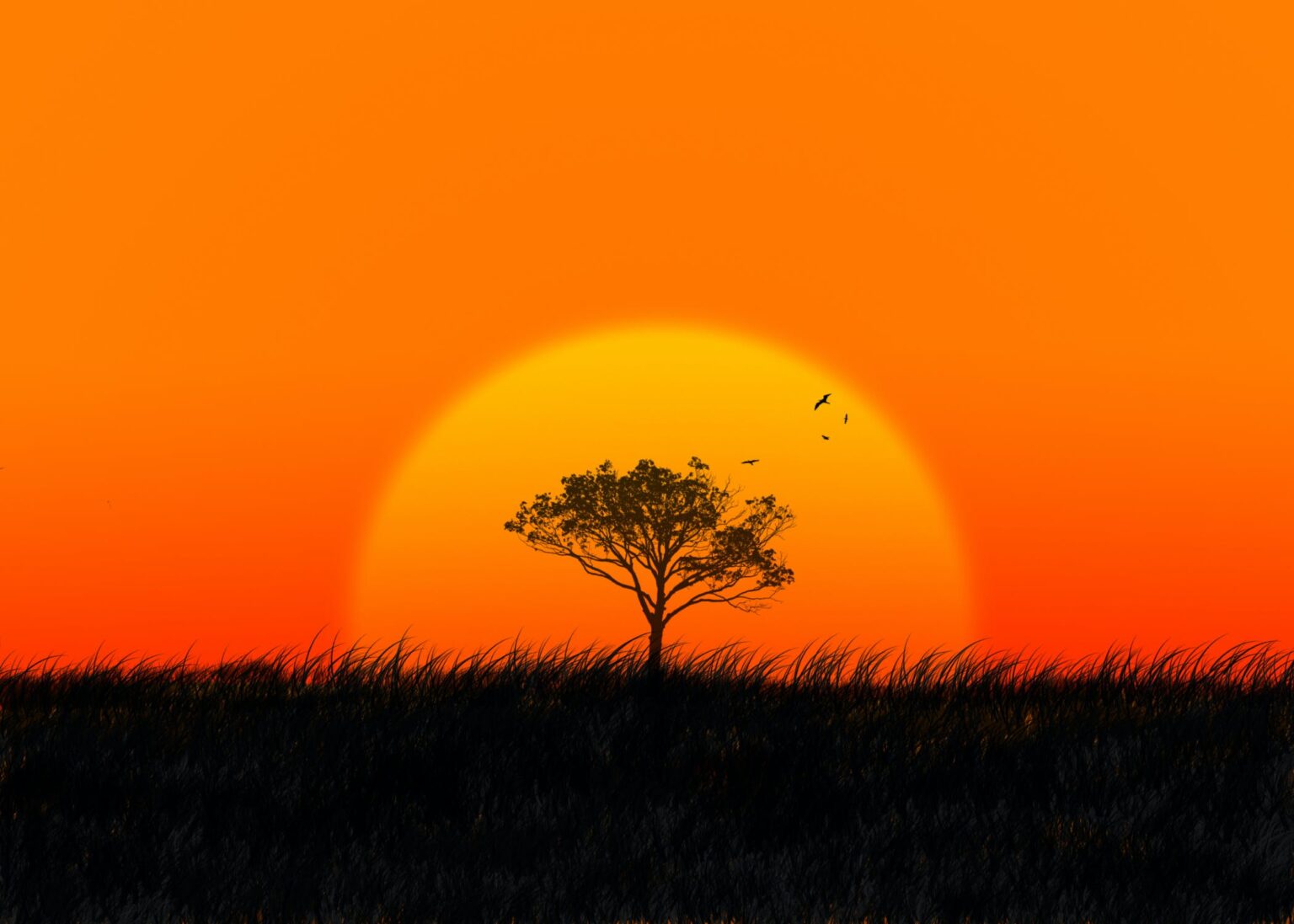[DYNAMIC-BLOGTABLEOFCONTENT]
The African Continent: Brief History
Africa is the world’s second-largest continent after Asia and roughly 11,7 million square miles in size. The African continent is the oldest inhabited territory on earth and is believed to be the “cradle of humankind.” Africa was first colonized by countries such as Great Britain, France, Portugal, Germany, Spain, and Italy from the 15th century onwards.
The history of Africa is complex and long, with political unrest, coups, and civil wars being prevalent, leading to failed currencies, poverty, and high levels of unemployment. In the case of African politics, deficiencies in governance, dictatorships, corruption, and conflicts are plentiful throughout the continent. In some African regions, access to clean water, electricity, medical services, and schooling remains a constant challenge.
Africa is highly biodiverse, but is heavily affected by environmental issues and hosts a large diversity of ethnicities, languages, and cultures. Africa has abundant natural resources such as oil and gas, minerals, land, and sunshine with incredible biodiversity.
African Currencies
Across the continent, most African currencies have continued to weaken against the United States Dollar. The South African Rand was stronger than the US dollar until 15th March 1982 and collapsed thereafter due to political pressure and international sanctions against apartheid. Since The ANC came into power in 1994 in South Africa, the Rand has tumbled against the Dollar, Euro, and Pound with the government failing in service delivery to tax-payers. Corruption and incompetency are prevalent. High oil and food prices continue to push up import costs, with most African countries showing large budget deficits and pushing up public debt.
What does African currency devaluation mean to international Game Hunting communities and hunting in Africa?
Currency devaluation means that hunting in Africa is affordable, accessible, and, most importantly, rewarding. African countries, especially those focused on tourism, wildlife, and hunting safaris, understand the contributing values of foreign currency in reducing unemployment and managing conservation efforts. In Africa, if it pays, it stays.
Big Game Hunting Safaris are popular, and across the African continent, many 5-star outfitters are top of their game, providing world-class services delivering African hunts, hunting trophies and ever-lasting memories. Unfortunately, like in any market, there are outfitters taking chances and are dead set on exploiting hunters and clients. Game Hunting Safaris ensures that our clients never find themselves, or their friends and families, in such a position.
At Game Hunting Safaris, our African outfitters are vetted and thoroughly audited. Visits have taken place to every one of our African outfitter’s facilities, to ensure only the highest quality hunting adventures.
African hunting safari prices vary between countries and depend on availability and trophy sizes. Logistics such as transport, remoteness of concessions, and shipping of trophies are also secondary costs that need consideration when planning your African hunts.
African outfitters offer many good quality, affordable safaris and have end-of-season discount hunts. The hunter, however, needs to be in a position where he or she can travel at short notice to take advantage of these hunts.
Hunting in Africa
A game hunting safari in Africa is an experience that hunters and photographers, or those just wanting to enjoy the African bushveld, should experience at least once in their lives. Africa is a majestic place on earth offering Big 5 hunting, plains game hunting, the Dangerous 7, and a variety of specialty hunts. Africa is the world’s greatest hunting destination, with over 180 species available.
Africa hunts have, of course, also evolved to include Southern Africa’s Tiny 10, comprising the steenbok, southern bush duiker, oribi, Damara dik dik, klipspringer, Natal red duiker, Cape grysbok, blue duiker, Sharpe’s grysbok, and the Livingstons suni.

Africa has the largest collection of carnivores and free-roaming wild animals. Africa plains game offers from the tiniest duiker to the giant eland. There is the quest for the nine-spiral horned antelope grand slam, achievable through loads of effort. These team members include nyala, greater kudu, lesser kudu, bongo, Cape eland, giant eland, sitatunga, bushbuck, and mountain nyala. Many hunters are fanatical about pig hunting and can add species such as giant forest hogs and red river hogs.
When booking an Africa hunting trip, many nocturnal species will be encountered, and are available for hunting. They include animals such as honey badgers, black-backed and striped jackals, spotted and brown hyenas, mongooses, and Cape foxes. The aardwolf is also available, but permits are exceptionally limited in available numbers.
Africa’s big game is not the only product on offer, but home to many wonders of the world, such as Victoria Falls, Fish River Canyon, Mount Kilimanjaro, Nile River, Okavango Delta, and the Sahara Desert.
Hunting in Mozambique
Mozambique is one of the best African big game destinations, with animal populations recovering well after the 15-year civil war. Crocodile hunting on Lake Cahora Bassa, along with hippos, is a favorite. Habitat ranges from rainforest and swamp to savannah woodland areas. The Niassa region in the north is well known for elephants, buffalos, leopards, lions, and plains game such as nyala, sable, and kudu.
Hunting in Angola
Angola is yet another wildlife and hunting paradise ruined by civil war. However, as we are aware, wildlife has the remarkable ability to recover, assuming that habitat for the indigenous animals has not been lost. Game hunting is not taking place commercially and officially is not open to safari hunting. Unmapped landmines litter the bushveld. However, it could become a new hot spot in 2025, with outstanding elephant and cape buffalo available in the Cubango Province. Many outfitters are already seeking concessions from the government. This could become a top destination for an African safari once CITES details have been confirmed. Watch this space for future opportunities.
Hunting in Zimbabwe
- Big game hunting in Zimbabwe has always been a favorite destination for hunters worldwide, with many discount hunts on offer.
- Available plains game hunting includes animals such as eland, zebra, impala, roan, waterbuck, sable, and bushbuck.
- The Matetsi region is best known for its elephant and Cape buffalo in abundance, with thriving leopard and lion populations.
- The Zambezi Valley is known for its huge herds of elephants and has one of the highest concentrations of Cape buffalo in Africa. Crocodiles and hippos are also abundant, making Zimbabwe a top African game hunting destination.

Hunting in Tanzania
- When it comes to dangerous game and plains game hunting, Tanzania offers some of the greatest and most memorable game hunting safaris in Africa with some of the finest wilderness areas available.
- It is listed as one of the top hunting destinations in Africa.
- The Selous Game Reserve is the largest worldwide, covering 80,000 square miles.
- Dangerous game hunting safaris occur in several different regions. Tanzania offers lion, elephant, leopard, hippo, crocodile, and Cape buffalo.
- Most game hunting safaris are conducted from tented camps in remote areas with high service ratings.
- Only the rhino is not available for hunting.
- Some of the top hunting areas include Masiland, Rungwa, and Selous. Tanzanian geography comprises many lakes, grasslands, and Africa’s highest point, Mount Kilimanjaro.
- Three classes of African hunts are available in Tanzania:
- A seven-day license allows the hunter to take two buffalo and common plains game.
- The second is a sixteen-day license providing an opportunity to take a cat.
- The third option is a 21-day hunting safari where the hunter can harvest three of the following four big game animals, namely the buffalo, lion, leopard, and elephant.
- Tanzania is also home to the sitatunga and East African eland.
Hunting in Kenya
In 1977, Kenya banned hunting due to the depletion of elephant and rhino populations through poaching, and it is currently illegal, not even as a traditional way of life. This excludes photographic safaris. Again, if it pays, it stays. In the years following, these numbers have more than halved and in certain instances have dwindled to as much as 70%. Kenya had some of Africa’s finest wildlife numbers and species, and big game hunting stretched back to the famous Roosevelt hunt of 1977. Local hunter-gatherers have been forced to farm.
Hunting is a key issue in wildlife conservation in Africa and is highly complementary to a vibrant trophy hunting industry. Rumors keep popping up every once in a while, saying game hunting in Tanzania will re-open. This has been going on for many years, and I think until there is a change in leadership and government, the status quo will remain.
Hunting in South Africa
- South Africa as a big game hunting destination has always been referred to as one of the crown jewels and boasts some of the most diverse wildlife populations.
- South Africa has every type of terrain available, from swamps to mountains and deserts to forests.
- South Africa is a premium destination for hunters and their families, with record top-quality trophies available.
- Your game hunting safari can be catered specifically to your specifications, whether it be for the Big 5, or the Dangerous 7.
- South African plains game species are extensive and spread throughout South Africa, depending on your target species.
- Cape buffalo hunting in South Africa is challenging, and affordable and top trophies are available, especially with end-season discount hunts becoming available.
- With the Rand continuing its demise, South African hunting packages are affordable, and air travel is cost-effective to ensure that the hunter can travel to many locations with relative ease.
- South Africans are known for their hospitality, wine farms, and their beer and braai “barbeque.” It is a great destination for the entire family.
- South African outfitters are some of the best in the business.
Hunting in the Central African Republic (CAR)
- The Central African Republic was one of the best game hunting countries in Africa but has been in the throes of a religious civil war between the government and former Seleka coalition groups since April 2013.
- Central African Republic covers a land area of 99,200 square miles (90% the size of Texas) and has a very low population density of approximately 5,5 million people.
- The forest elephant had huge tusks, and these numbers have dwindled due to poaching.
- Game hunting safaris included species, such as the Lord Derby (giant) eland and the Central African savannah buffalo.
- Other African plains game species include Western roan antelope, Western sitatunga, Deffas waterbuck, Buffon’s Kop, Bohor reedbuck, bushbuck, and the giant forest hog.
- Hunting in the Central African Republic is not closed, but the Central African Travel Advisory in 2023 put out a level-4 travel warning due to violent crime and aggravated battery.
- Armed groups control large areas of the country, and they regularly kidnap, injure, and/or kill civilians.
Hunting in Uganda
Winston Churchill called Uganda the “Pearl of Africa.” Game hunting was banned in 1979 and was reintroduced in 2002 around Lake Mburo and in 2006 in the Kabwoya and Kaiso-Tonya area. Civil wars, like in many other African countries, raged from 1986 to 1994, putting pressure on the wildlife populations. Before then, the Ugandan Bush War was fought by the official Ugandan government and its armed wing, the Uganda National Liberation Army.
Uganda has an extraordinary variety of specialty game that promises satisfying safari hunting experiences. A wide variety of endemic animals to Uganda include East African sitatunga, Nile buffalo, Uganda kob, and Jackson’s hartebeest. Big game hunting for elephants and buffalo is conducted primarily on the Karamoja plains, along with oribi and waterbuck.
Hunting safari trips for buffalo and hartebeest are from December to the end of April. After that, the grass is too high, and the buffalo hunt becomes too challenging.
Hunting in Botswana
Botswana was previously known as one of the most dangerous game hunting countries in Africa, with a plethora of leopards, lions, elephants, and buffalo. It has the highest population of elephants in Africa, with more than 130,000 all roaming freely in un-fenced parks and wide-open spaces. Hunting areas stretched from the Kalahari Desert to the Okavango Delta. In 2013, the government banned all hunting in government and community lands, and many people in the industry lost their jobs. Big game hunting was now only going to be on a photographic basis. Hunting continued on privately owned ranches.
Game Hunting Safaris supports the decision made in 2019 by the Botswanan Government to lift the hunting moratorium and the new controlled hunting program. Less than 400 elephant hunting licenses are issued per year. Botswana’s hunting season runs from April to September and has a huge mix of terrain including, rivers, salt pans, savannah, and the Okavango Delta.
Botswana African hunts include lions, leopards, Cape buffalos, and elephants. Plains game hunting is still excellent, with many sought-after species such as eland, kudu, gemsbok, red hartebeest, warthog, wildebeest, zebra, and bushbuck available.

Hunting in Zambia
- Game hunting safaris in Zambia include dangerous game such as lion, buffalo, hippo, crocodile, elephant, and leopard.
- Specific animal types are hunted depending on the hunting areas and regulations.
- In the mid-1970s, Zambia created Game Management Areas (GMAs) totaling over 60,000 square miles, circling national parks and creating dedicated private hunting areas.
- The Luangwa Valley lies at the end of the Great Rift Valley, fed by many sand rivers that erupt during the rainy season.
- The variety of African plains game is substantial, including the Cookson’s wildebeest, black lechwe, and the rare Crawshay’s Defassa waterbuck.
- The Kafue Flats GMA covers over 2,500 square miles.
- The Kafue Plateau is home to sable, Zambian sitatunga, yellow back duiker and puku. Large herds of oribi and tsessebe are found in the Bangweulu swamp.
- Hunting runs from permanent camps with safari tents mounted on cement slabs, foundations, or thatched reed bungalows/huts.
Hunting in Namibia
Namibia is fast becoming one of the top game hunting destinations in Africa. Namibia and South Africa are the only two countries where the entire Big 5 are hunted, white as well as black rhino. It is a politically stable country and gained its independence in 1990.
Hunting in Namibia varies from dense thorny savannah to vast desert plains. The high elevation of the central plains can be physically challenging. Leopards inhabit the central and southern regions. Elephants, rhinos, Cape buffalos, and lions are in the north. Plains game hunting occurs in the southern and central parts of the country and includes species such as Cape eland, greater kudu, blue and black wildebeest, impala, springbok, warthog, and gemsbuck.
Most of the game hunting takes place on private ranches or concessions allocated by the Namibian government under the watchful eye of the Department of Nature Conservation.

Big Game Hunting in Africa
Big game hunting is prevalent throughout African countries, and Africa is a place to book your next hunting adventure!
Click to find out more about our African hunting packages for dangerous game or African plains game. Contact us for specific requests or customized hunting itineraries.
